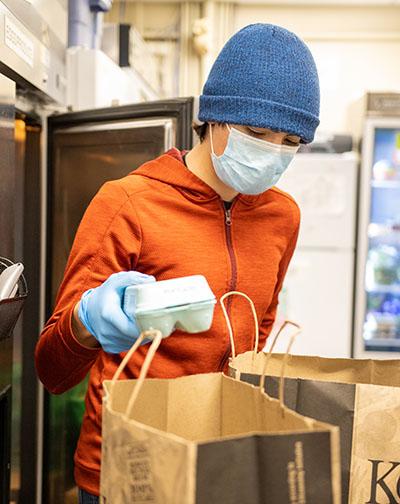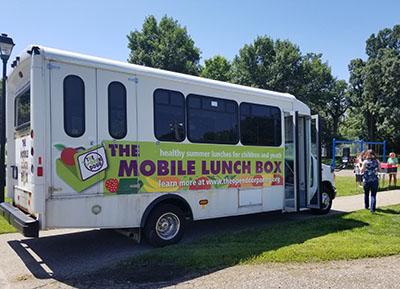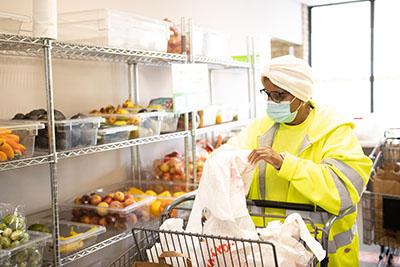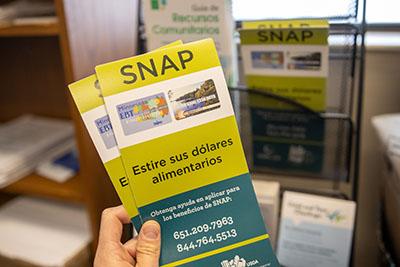
4 Reasons Why People Need Food Assistance Right Now
With many economic indicators rebounding and "We’re Hiring” signs posted in countless businesses, why do people need food assistance right now? It’s complicated and dynamic, and the need is very real in communities across our region and the country. Here, we outline a few big reasons why 1 in 10 Minnesotans, including 1 in 7 kids, might be facing hunger right now, and why for far too many, the economic recovery is coming slowly, if at all.
1. We’re still in a pandemic, and COVID is still very real
COVID-19 case numbers and COVID-related deaths are being reported at rates comparable to March 2020, with the uptick in cases primarily due to localized outbreaks in places with low vaccination rates. Where there are lower vaccination rates, coupled with children under 12 not yet eligible to receive a vaccine, cases and deaths are expected to continue, particularly as the Delta variant of the virus spreads.
Whether or not someone can be and is vaccinated, fear of the virus’ immediate and long-term consequences can impact daily life, like education, employment and mobility. Many jobs, like childcare or food processing, come with greater risk of exposure. Plus, those jobs—generally providing low wages and not offering sick time nor options to work remotely—are more often filled by our neighbors of color, immigrants and refugees, communities who have been disproportionately impacted by the pandemic.
Beyond the financial and emotional impacts of COVID are the potential long-term health impacts for folks who contracted the virus, with early studies pointing to increased likelihood of diabetes, organ damage and the onset of autoimmune conditions. And, ongoing harms caused by the pandemic have been especially evident among people with disabilities. While many of us might be moving on to the next chapter post-pandemic, that’s just not the reality for far too many.
2. Barriers to food access still exist and have worsened

The number of families struggling to afford food rose steeply in the pandemic and remains high, especially among children and households of color. Before the pandemic and still today, many families lack access to reliable transportation or proximity to grocery stores. The pandemic created additional challenges for communities of color to access affordable, healthy foods as the cost of food and staples increased, public transit limited operations, and grocery stores changed their hours. These impacts disproportionately affected Black neighborhoods, given that census tracts with higher Black populations had the fewest available supermarkets.
For many, planning and preparing a meal may not be possible because of mobility, ability, equipment or knowledge. Often, the types of jobs, required hours, commute, and physical demands make meal affordability and preparation extremely challenging. And while government programs and the charitable food system have increased the amount of food help available, there has always been stigma associated with seeking food assistance.
Even as the U.S. reported 9.2 million open jobs in May 2021, too many jobs don’t offer high enough wages to cover the average cost of living in their area. In fact, a report just released by the National Low Income Housing Coalition found that minimum wage workers cannot afford rent in any U.S. state. While jobs might be available, and for seemingly good wages, for many of our neighbors, it doesn’t add up to covering rent, utilities, transportation, health care and groceries. As of March 2021, 1 in 7 renters were not caught up on rent.
3. Inequities persist, and require systemic shifts

Families of color have faced some of the worst hardships this past year, due in part to harsh, long-standing inequities in education, employment, housing, health care and other arenas that the current crisis is exacerbating. In fact, the cumulative effects of these pre-pandemic disparities have left many Minnesotans of color with fewer resources to buffer themselves against the current economic landscape, making them more vulnerable to unexpected challenges like a layoff or reduced hours.
A MinnPost analysis found that Native Americans living in Beltrami, Clearwater, and Mahnomen Counties, along with Black and Hispanic people in the Twin Cities, bore the brunt of the COVID-era unemployment crisis in Minnesota. These trends held at the national level, even as the economy began to recover: By late 2020, White Americans had recovered more than half of the jobs they lost between February and April 2020, while Black Americans recovered only around one-third.
The disparities in unemployment this last year have likely exacerbated income inequality among race and ethnic groups. Even before the pandemic, the Federal Reserve Bank of Minneapolis found that White Minnesotans report median earnings 1.6 times those of Black, Latino/a, Native American and Hmong Minnesotans. These disparities exist between race and ethnic groups even when controlling for other factors like education. With people of color more heavily concentrated in low-wage hourly jobs or gig work, working in industries most susceptible to pandemic-era layoffs and without benefits like paid sick days or health insurance, it is no surprise that these inequities persisted throughout the COVID-19 crisis—and ultimately furthered the hunger divide in our state.
Feeding America recently published a racial disparity dashboard, illuminating the unequal rates of disability, homeownership, median income, poverty and unemployment for people of color. As they state, “food insecurity is an economic condition, influenced by the five factors analyzed in the dashboard. The disparities evident in those factors stem, in many cases, from systemic racism and bias.” Unfortunately, Minnesota has some of the country’s worst racial disparities in these areas, leading people of color to experience hunger at least twice more than White Minnesotans throughout this last year.
4. Relief benefits are relief, not solutions

Over the past 16 months, relief packages and programs like the American Recovery Plan, extended unemployment insurance, Pandemic-EBT, rent and mortgage moratoriums, and Emergency-SNAP, to name a few, have provided a lifeline to the majority of Americans. More than 42 million people are currently enrolled in SNAP, 60% of whom are benefitting from additional Emergency-SNAP benefits. More than 167 million people received the last round of direct economic impact payments. And an estimated 39 million households, covering nearly 90% of kids, have begun or will begin receiving enhanced Child Tax Credit payments this month.
These supports have, so far, kept the worst of the pandemic’s economic impacts at bay for many Americans, and could, depending on state and federal implementation, begin to address several of the barriers and inequities described above. According to research by the Urban Institute, “safety net programs and pandemic-related income supports likely prevented even more severe deprivation among families who lost jobs and income and provided buffers against hardship for many other families, improving the average adult’s ability to meet their family’s basic needs.”
But most of the benefits provided through pandemic relief efforts are intended to provide relief, not to solve the many circumstances that lead to hunger or poverty. We need to continue providing this level of support to ensure food assistance need doesn’t rise again, especially for our most vulnerable neighbors who will likely experience the slowest recovery.
Besides that, benefits can be complex—from eligibility requirements to application processes to enrollment to recertification, all made more complicated by pandemic stressors and altered service models. Something as seemingly simple as completing and signing a form can feel insurmountable. Further, many families with difficulty affording food may still have income above SNAP’s limits or face other eligibility restrictions. And with so many families new to assistance, many may not have known if and how to access the resources they needed.
On top of that, many of these lifelines are tangled in political negotiation and shifting timelines—so while they may bring relief, it’s truly only momentary, with certainty only coming in the challenges that lie ahead.
What you can do to support those facing hunger and an uphill recovery:
-
Listen to the stories of folks facing food insecurity and other barriers to stability. We often share those stories on our blog. Also, The Sahan Journal is a rich storytelling resource on the struggles, successes and transformations of Minnesota’s immigrants and communities of color.
-
Advocate for the policies and programs that will bring meaningful solutions. Join our advocacy list and follow us on Twitter for the latest updates. The Food Research & Action Center’s Legislative Action Center provides opportunities to act.
-
Volunteer to fight hunger in your local community, be it here at Second Harvest Heartland or at your neighborhood service organization or food shelf.
-
Donate financially to causes addressing barriers and inequities, including our work of ending hunger together.
